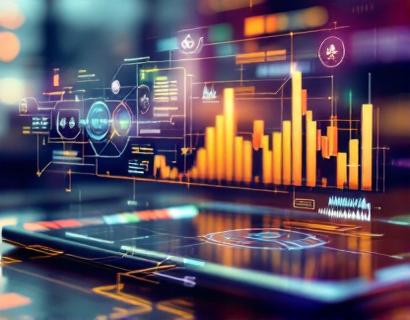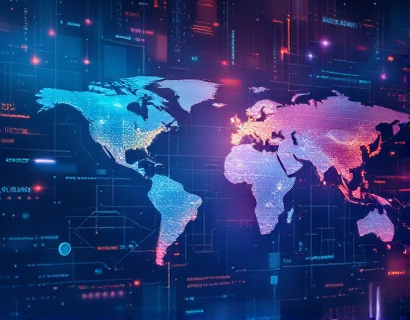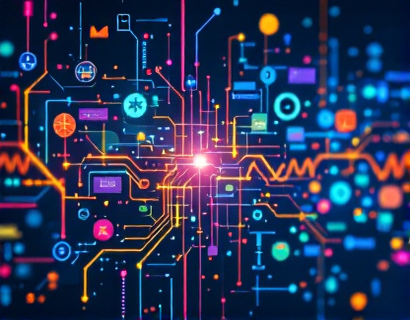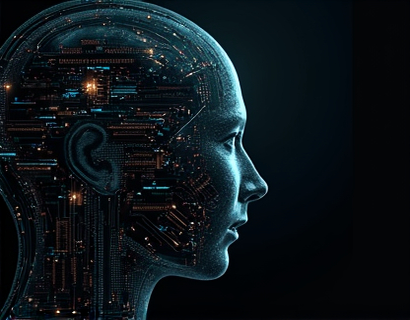Transforming Digital Interactions: The Synergy of Crypto and AI
The intersection of cryptocurrency and artificial intelligence (AI) is revolutionizing the digital landscape, offering unprecedented opportunities for enhanced user experiences and driving growth across various sectors. This article explores the latest innovations at the forefront of this convergence, providing valuable insights for tech enthusiasts and professionals alike. By leveraging the unique properties of blockchain technology and the advanced capabilities of AI, developers and businesses are crafting sophisticated solutions that redefine app engagement and user interaction.
Understanding the Basics: Crypto and AI
To fully appreciate the transformative potential of crypto and AI, it's essential to understand the fundamentals of both technologies. Cryptocurrency, a digital or virtual currency secured by cryptography, operates on a decentralized network known as a blockchain. This technology ensures transparency, security, and immutability, making it an ideal foundation for various applications beyond mere transactions.
Artificial intelligence, on the other hand, encompasses a range of technologies designed to simulate human intelligence in machines. These include machine learning, natural language processing, and computer vision. AI's ability to analyze vast amounts of data, recognize patterns, and make predictions has opened new avenues for enhancing digital interactions and personalizing user experiences.
The Convergence of Crypto and AI
The combination of crypto and AI creates a powerful synergy that can address complex challenges and unlock new possibilities. One of the primary areas where this convergence is making a significant impact is in the realm of decentralized applications (dApps). dApps leverage blockchain's decentralized nature and AI's intelligent algorithms to create more secure, transparent, and user-friendly applications.
For instance, AI-driven algorithms can optimize the performance of dApps by dynamically adjusting parameters based on real-time data. This ensures that applications run smoothly, even under heavy loads, and provides a seamless user experience. Moreover, AI can enhance security measures by detecting and mitigating potential threats, thereby safeguarding user data and assets.
Enhancing App Engagement through AI
One of the most exciting applications of AI in the context of crypto is its ability to enhance app engagement. Traditional apps often struggle to maintain user interest over time, leading to high churn rates. By integrating AI, developers can create adaptive and personalized experiences that keep users engaged and coming back for more.
AI-powered recommendation systems, for example, can analyze user behavior and preferences to suggest relevant content or services. In a crypto context, this could mean recommending specific tokens or decentralized finance (DeFi) protocols based on a user's investment history and risk tolerance. Such personalized recommendations not only improve user satisfaction but also increase the likelihood of user retention and active participation.
Tokenization and AI-Driven Market Insights
Tokenization, the process of converting assets into digital tokens on a blockchain, is another area where crypto and AI intersect. AI can play a crucial role in tokenization by providing deep market insights and predictive analytics. By analyzing historical data and market trends, AI algorithms can help identify potential opportunities and risks, enabling more informed decision-making.
For instance, AI-driven platforms can analyze social media sentiment, news articles, and other relevant data sources to gauge market sentiment and predict price movements. This information can be invaluable for investors looking to make strategic decisions about token purchases or sales. Moreover, AI can facilitate the creation of more sophisticated tokens with smart contract functionalities that adapt to market conditions, offering dynamic returns and enhanced value propositions.
Decentralized Identity and AI-Enhanced Security
Privacy and security are paramount concerns in the digital age, and the convergence of crypto and AI offers robust solutions. Decentralized identity (DID) systems, powered by blockchain, allow users to control their personal data and authenticate themselves without relying on centralized authorities. AI enhances the security of DID systems by providing advanced biometric verification and anomaly detection.
AI algorithms can analyze patterns in user behavior to detect unusual activities that may indicate a security breach. For example, if a user suddenly accesses their account from an unfamiliar location or device, AI can flag this as suspicious and prompt additional verification steps. This proactive approach to security not only protects user data but also builds trust in decentralized applications.
AI-Driven Customer Support in Crypto Ecosystems
Customer support is a critical component of any successful application, and the crypto ecosystem is no exception. AI-powered chatbots and virtual assistants can provide 24/7 support, answering common queries and guiding users through complex processes. These AI-driven tools can understand natural language, allowing for more intuitive and human-like interactions.
In the context of crypto, AI can handle tasks such as transaction guidance, account management, and even investment advice. By offloading routine support tasks to AI, human agents can focus on more complex issues, improving overall efficiency and user satisfaction. Additionally, AI can analyze user feedback to identify common pain points and inform product improvements.
Market Efficiency and AI-Enhanced Trading
The financial sector, including crypto markets, can greatly benefit from AI's ability to process and analyze vast amounts of data in real-time. AI-enhanced trading platforms can execute trades at optimal times, taking into account multiple factors such as market trends, news events, and technical indicators. This level of precision and speed is unattainable by human traders alone, leading to improved market efficiency and better investment outcomes.
Moreover, AI can help detect and prevent market manipulation and fraudulent activities by identifying unusual trading patterns and anomalies. By maintaining a fair and transparent market, AI contributes to the overall health and growth of the crypto ecosystem.
Challenges and Considerations
While the potential benefits of combining crypto and AI are substantial, there are also challenges and considerations that must be addressed. One of the primary concerns is the regulatory landscape. As crypto and AI technologies evolve, regulators are increasingly scrutinizing these innovations to ensure they align with existing laws and protect consumers.
Another challenge is the technical complexity involved in integrating AI with blockchain systems. Developers need to possess a deep understanding of both technologies to create robust and secure applications. Additionally, there is the issue of data privacy and the ethical use of AI. Ensuring that user data is handled responsibly and transparently is crucial for maintaining trust and compliance.
Future Prospects: The Next Frontier
The future of crypto and AI is promising, with numerous exciting developments on the horizon. One area of interest is the integration of AI with quantum computing, which could further enhance the processing power and capabilities of both technologies. Quantum AI could solve complex problems that are currently intractable, opening new frontiers in cryptography, optimization, and machine learning.
Another promising direction is the development of AI-driven decentralized autonomous organizations (DAOs). DAOs combine the decentralized nature of blockchain with AI's decision-making capabilities, enabling autonomous governance and management of community-driven projects. This could lead to more democratic and efficient organizational structures in various sectors.
In conclusion, the convergence of crypto and AI is transforming digital interactions, offering enhanced user experiences and driving growth in the tech sector. By leveraging the strengths of both technologies, developers and businesses can create innovative solutions that redefine app engagement and set new standards for user interaction. As the field continues to evolve, staying informed and adaptable will be key to harnessing the full potential of this exciting convergence.










































